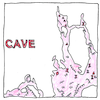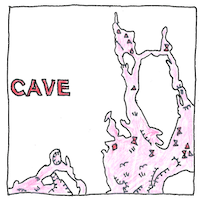Édouard-Alfred Martel
speleology

|
Speleology
Caves, sinkholes, disappearing lakes, underground streams, and sinking rivers, forming in areas of soluble stone called karst, have their own animal species called troglobites and involve processes that are unique to the subterranean world. Speleology involves speleogenesis, speleomorphology, cave cartography, geochemistry, hydrogeology, geology, and hypogean biology also known as biospeleology. Édouard-Alfred Martel was the first scientist to introduce speleology as a distinct area of study.
Speleothems
During the Permian, 250 million years ago, Capitan Reef was a coastline of an inland sea where the remains of sealife gradually accumulated. After the middle of the Cenozoic, during the last 33 million years, hydrogen sulfide from petroleum deposits under the reef perculated up and mixed with water to form sulfuric acid that dissolved large caverns in the reef. Fifteen to twenty million years ago, the reef was lifted above groundwater level and speleothems began to be deposited in the caves that are now known as the Carlsburg Caverns, over 175 miles of underground caves and passageways. There as a boy I learned the mnemonic to distinguish speleothems hanging from the ceiling (a stalactite must hold tight to the ceiling) from speleothems rising from the floor (a stalagmite might someday reach the ceiling). Mnemonics didn’t favor other intriguing speleothems, pencil-thin soda straws and draperies that hang, helictites that wave from walls like the tails of fish, stalagnates, pillars where stalactites and stalagmites meet, flowstone that runs from the bases of stalagmites, rimstone dams called gours at the edges of pools, cave pearls, spherical concretions of calcium salts, and small knobby coral-like clusters called cave popcorn.
Exploring the science
It’s not exploring caves for adventure. It could still be fun. Beware of titles such as Science for Fun & Profit. Mostly, it’s tedious work. Try doing only a little at first. If you like it, then gradually commit.



Édouard-Alfred Martel started the Société de Spéléologie in 1895. He published many books and articles on speleology.
Being trapped in a mine can lead to claustrophobia (fear of being enclosed in a small space), which would be an impediment to enjoying the study of caves. Even though we have large rooms in our cave systems, getting there often involves squeezing through narrow passageways.
See also in The book of science:
Readings in wikipedia: